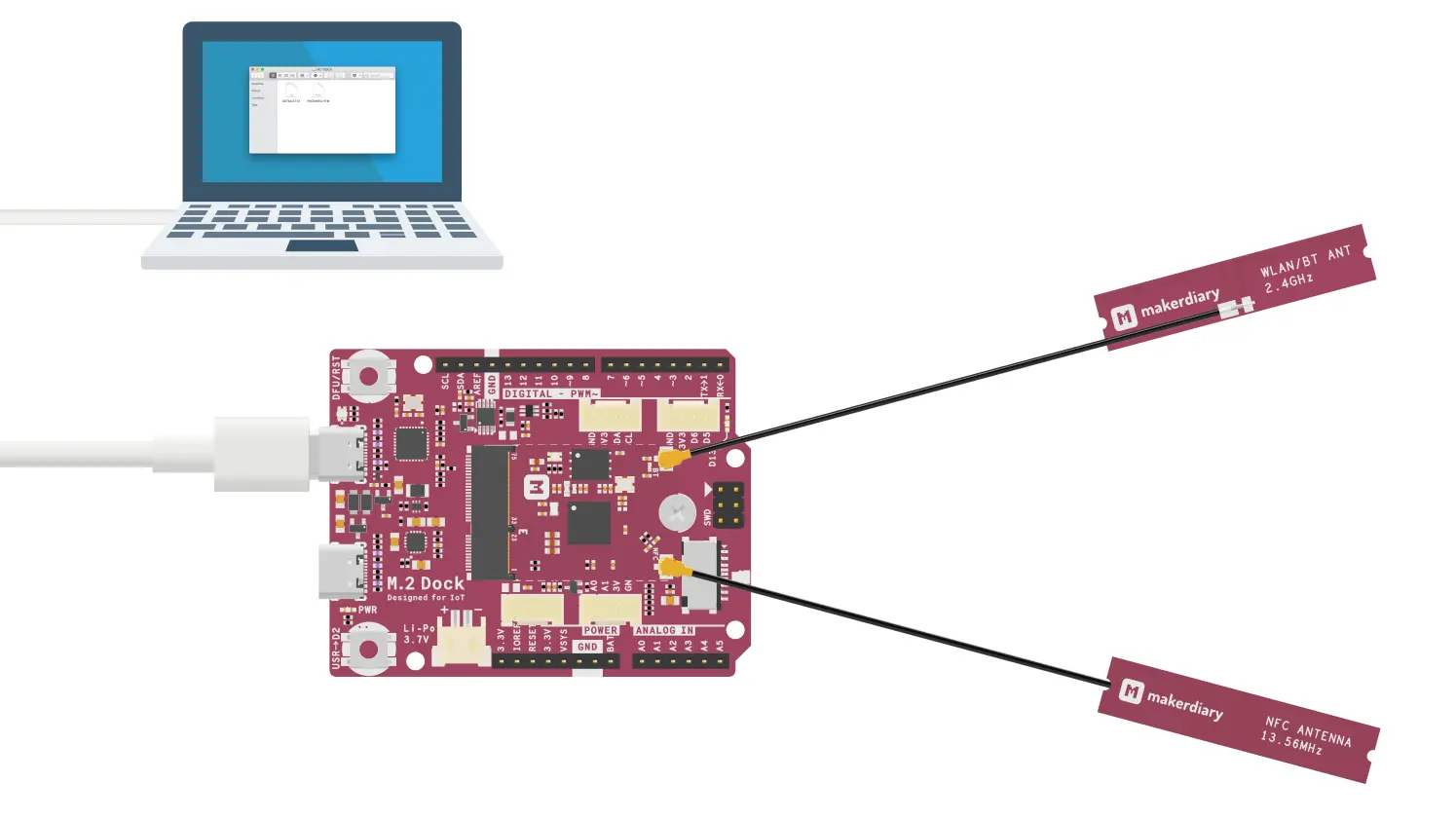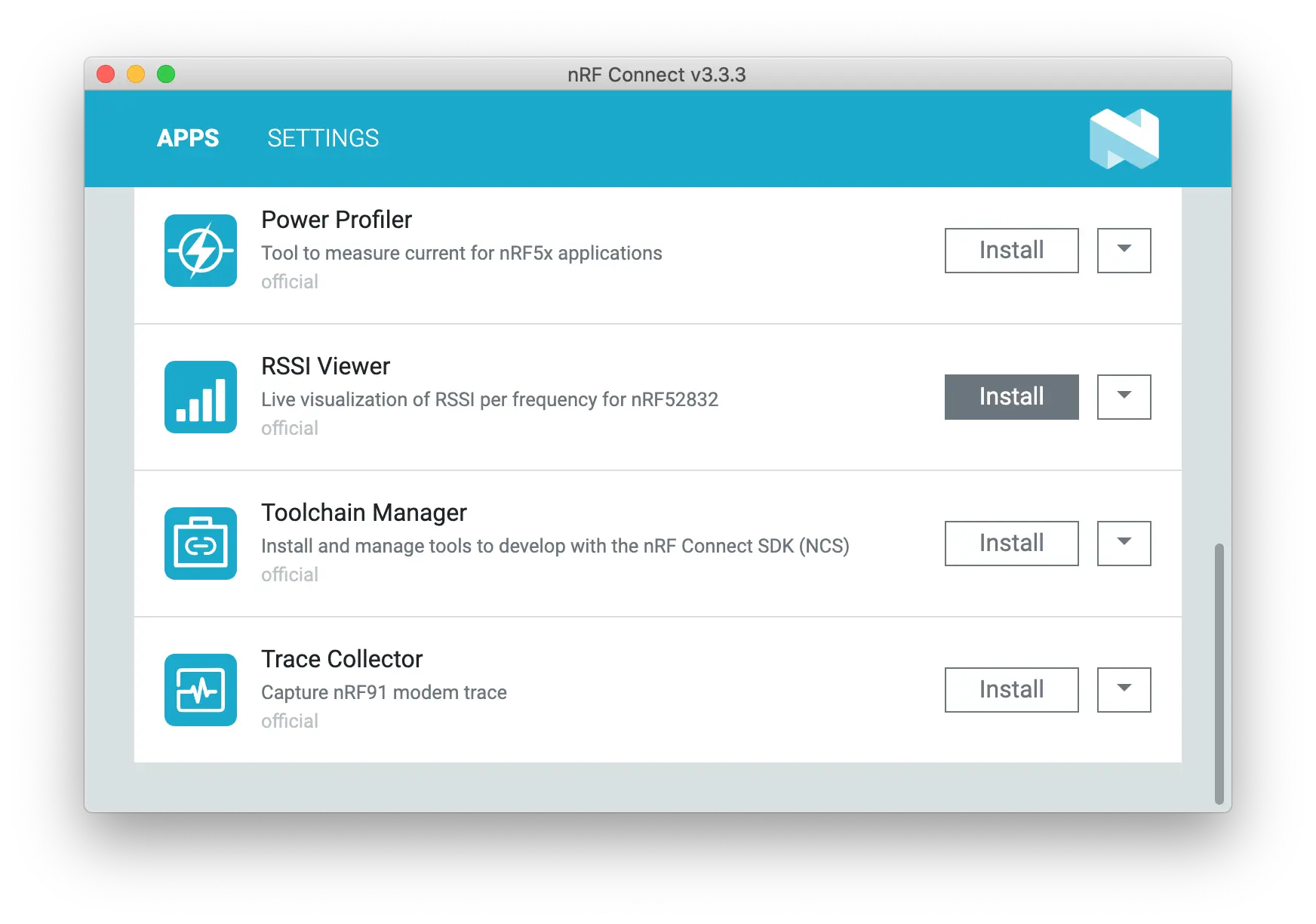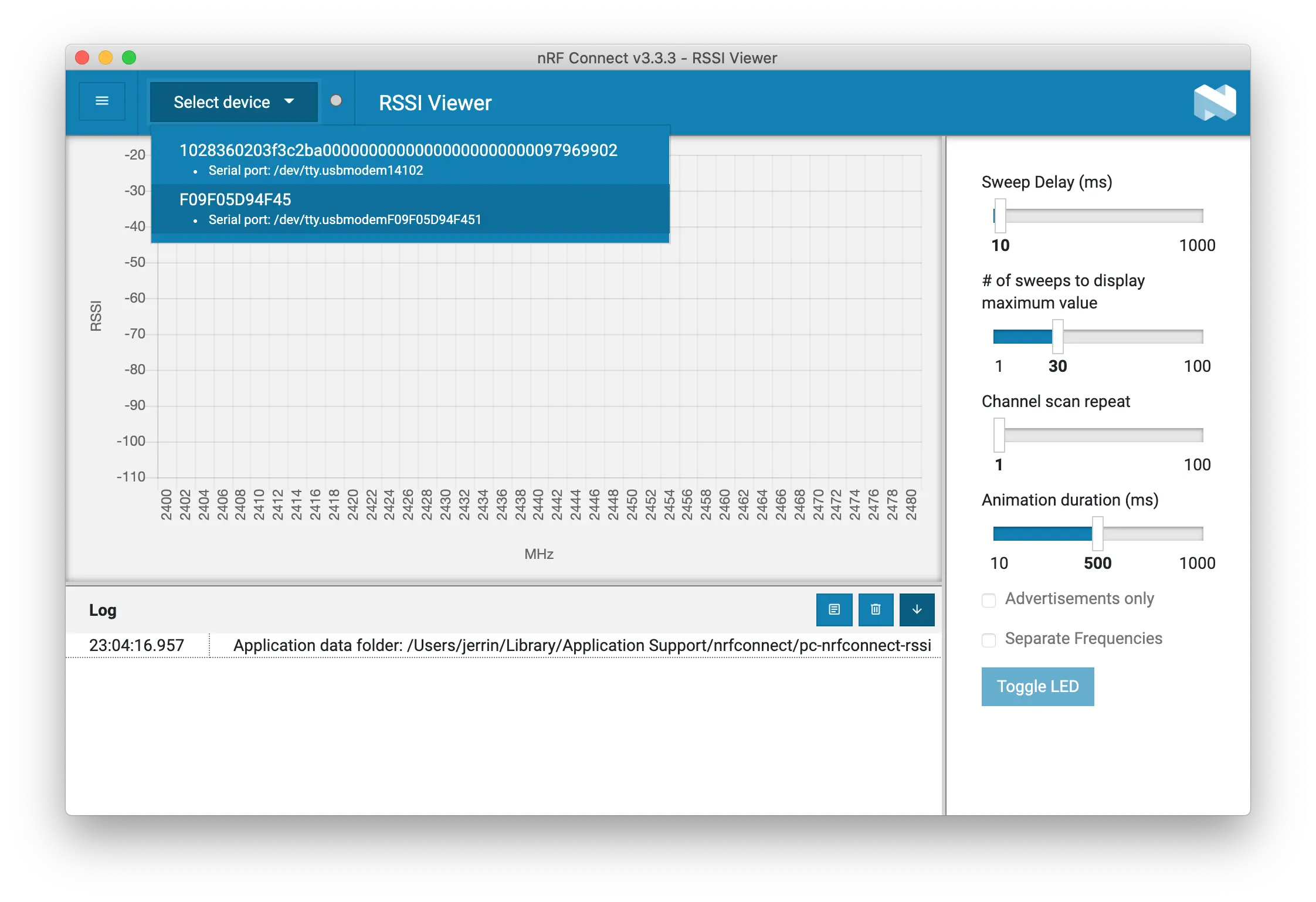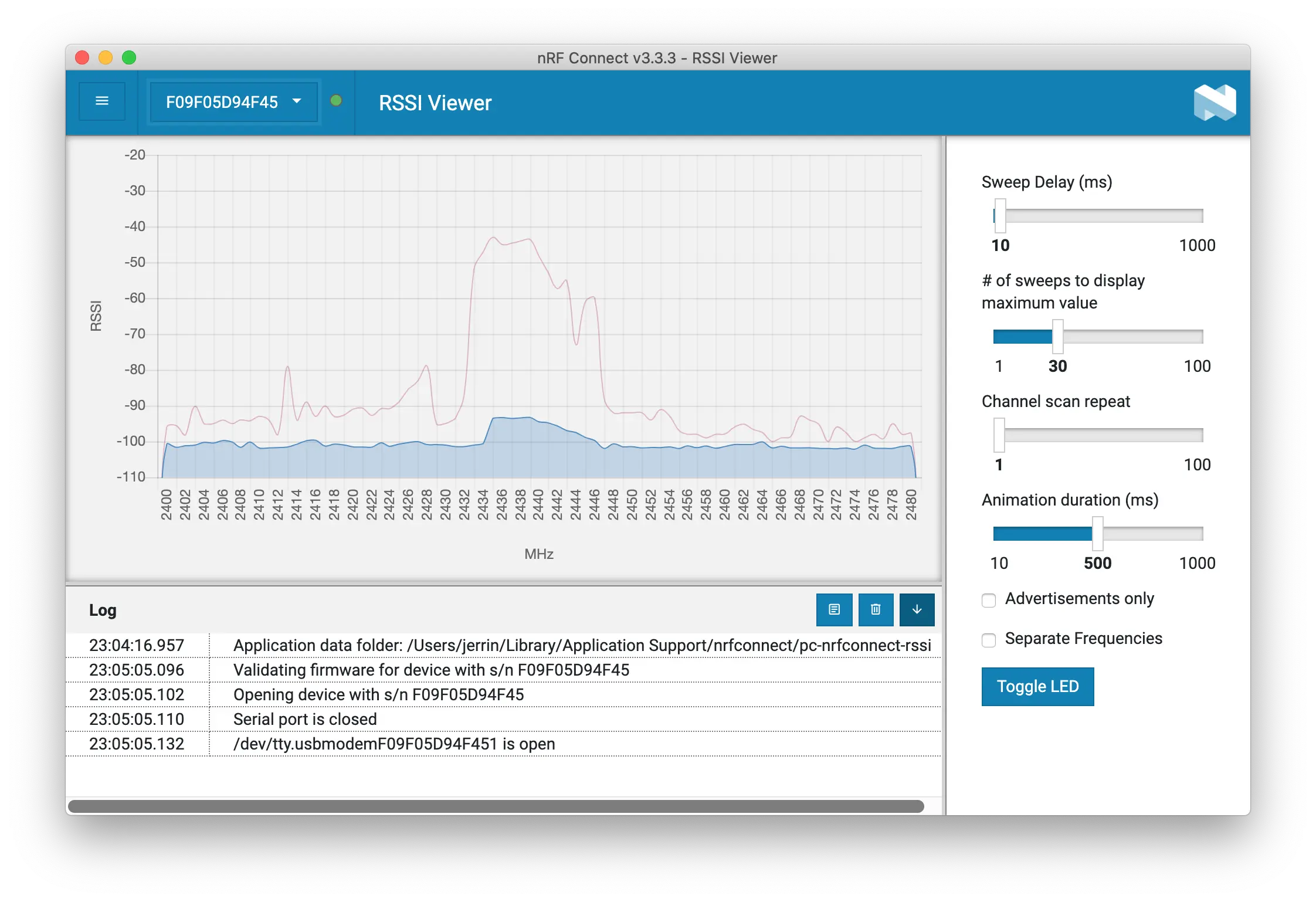RSSI Viewer Example¶
Description¶
The RSSI Viewer Example shows how to behave a RSSI Viewer and send RSSI data over serial port.
The nRF Connect RSSI Viewer app shows dBm per frequency in the 2400-2480 MHz range, and allows the user to tweak settings like sweep delay and animation duration.
Tip
Before you start building, remember to set up the nRF5 SDK development environment first. See Setup the nRF5 SDK for details.
Building the example¶
You can find the source code and the project file of the example in the following folder: examples/nrf5-sdk/rssi_viewer.
Open terminal and navigate to the directory with the example Makefile:
cd ./examples/nrf5-sdk/rssi_viewer/armgcc
Run make to build the example:
make
Programming the firmware¶
If compiled successfully, the firmware is located in rssi_viewer/armgcc/_build with the name nrf52840_xxaa.hex.
Connect the debugger USB port to your PC using the provided USB-C Cable. A disk drive called M2-DOCK will be automatically detected by the computer.

Run the following command in rssi_viewer/armgcc to program the board:
make flash_all
Tip
See Programming section for details about how to program the nRF52840 M.2 Module.
Testing¶
Test the RSSI Viewer Example application by performing the following steps:
-
Install the RSSI Viewer app in nRF Connect for Desktop by clicking Install.

-
Connect to the nRF52840 M.2 Module USB port, open the RSSI Viewer app and select the USB CDC ACM port.

-
Observe the RSSI data chart and try to tweak settings like sweep delay and animation duration.

Create an Issue¶
Interested in contributing to this project? Want to report a bug? Feel free to click here: